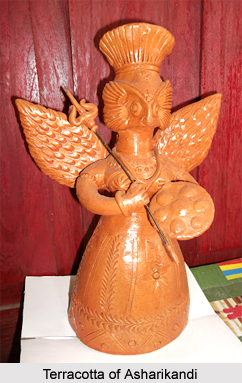 Culture of Dhubri District is an amalgamation of distinctive artistic heritage as well as historical background. Dhubri District, which is popularly known as the gateway of western Assam, was also regarded as the meeting place of diverse cultural groups, which blended in the past. The growth of blended culture in this region particularly in case of literature and language, art and religion is due to constant process of absorption of various races, castes and beliefs of local people, invaders and migrated people. Dhubri District possesses a rich archaeological and cultural inheritance from the ancient time.
Culture of Dhubri District is an amalgamation of distinctive artistic heritage as well as historical background. Dhubri District, which is popularly known as the gateway of western Assam, was also regarded as the meeting place of diverse cultural groups, which blended in the past. The growth of blended culture in this region particularly in case of literature and language, art and religion is due to constant process of absorption of various races, castes and beliefs of local people, invaders and migrated people. Dhubri District possesses a rich archaeological and cultural inheritance from the ancient time.
Dhubri District came in contact with the foreign invaders earlier than the rest of Assam. As this district is commonly called the doorway of this state, people of different ethnic identity came to this region with dissimilar aims. Interestingly, a major portion of them settled in this region. As a result, Dhubri District witnessed the growth of mingled culture, especially in language, art, literature and religion. The prominent local language of the people of this district is Goalpara District, which is popularly known as `Desi Bhasha`. Simultaneously, people also speak Assamese Language and Bengali Language mainly in the urban area of Dhubri District.
The culture of Dhubri District offers a glimpse of the traditional lifestyle of the people. As far as the dress of the women folk of this region is concerned, Saree is commonly used by both urban and rural women folk. In the earlier days, rural women wore a piece of cloth that was called `Patani`. Interestingly, this style of clothing is still seen in some rural areas of the region. The most significant ingredient of the cultural built-up of Dhubri District is its rich and indigenous folksongs and dances which are very popular from ancient time. The themes of these songs and dances are mainly based on religion and love affairs. Goalparia folk song is considered as the soul of the culture of this district.
The material evidences of rich cultural tradition of Dhubri District are marked by the existence of several heritage buildings including temples, shrines and some archaeological remains and a range of crafts that are scattered all over the region. `Terracotta of Asharikandi` is a popular craft that is practiced among the "Kumbhakar" or Kumara (potter) community of Asharikandi village near Gauripur. Terracotta (means burnt clay) craft was previously confined to their families and neighbourhood areas. But, presently, it covers a major position through out the country. Pith Craft is a folk art of Kuhila practiced by the Malakar or Bhuimali communities of Dhubri District residing at Gauripur, Golokganj and Bilasipara area. It is locally known as `Sola` or `Kuhila` which are available in the muddy land. The rich culture of Dhubri District replicates the proper blend of rich ancient past and conventional inheritances.






